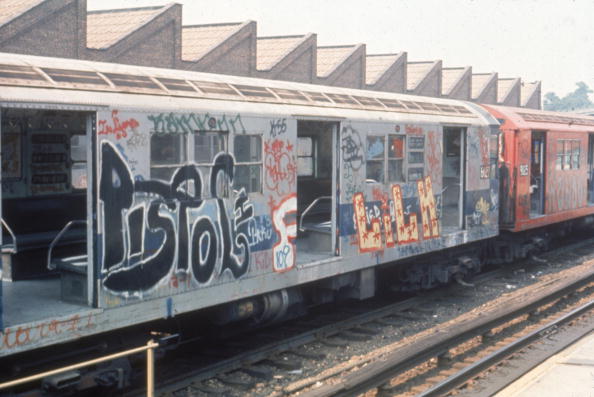
Source: Hulton Archive / Getty
With all of the media hype claiming that New York City is heading back to its past when it comes to crime, according to the Metropolitan Transportation Authority, graffiti has already made a significant comeback on its subway trains.
In a recent article from the New York Daily News, there’s a resurgence in graffiti appearing on the city’s subway trains, powered by a new generation of taggers and their crews. For those MTA workers in train yards throughout the city, the sight reminds them of that time period in the 1970s and 1980s where elaborate murals decorated every running train. One caveat? These new graffiti writers are working much faster. “It’s coming back strong,” said a veteran transit worker who opted to remain anonymous to protect themselves. “The speed of these kids is unbelievable. I can’t believe how fast they do a whole train.”
According to documentation from the MTA, officials reported that there were 120 incidents of graffiti on subway trains in January, marking a 21% increase when compared to the tally of incidents recorded in the same month last year. There was also an 8% bump from the 111 reported graffiti-related incidents reported in 2020 when subway ridership was double the current amount that it is today before the COVID-19 pandemic hit. This is coupled with a notable uptick in the number of unauthorized people gaining access to subway tracks. 163 people made their way onto the tracks in December 2021, more than double the 61 people the MTA recorded doing the same in July of that year.
These numbers worry the MTA, particularly since taggers are not easily caught as they don’t need to stick around to see their work thanks to social media and the ability to post on the move. “Vandalism is a crime that hurts regular New Yorkers trying to get where they need to go,” said MTA spokesman Mike Cortez. “It senselessly slows down commutes when trains need to be removed for cleaning, costs taxpayers money that otherwise could be used to improve service, and forces cleaners to work around the clock to undo damage to train cars.”
















